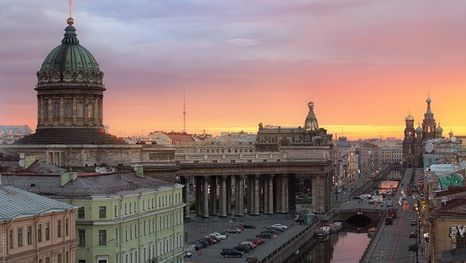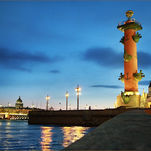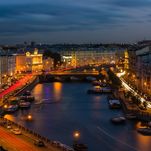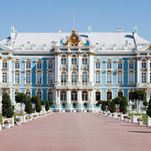Must-see sights in Saint Petersburg - guided tour
Here, you will find a brief list of sights typically mentioned in Saint Petersburg guidebooks. In our case, we suggest using this list as a base for your personalized itinerary. We provide guided tours in Saint Petersburg in English, French, Spanish, Portuguese, and German.
For your convenience, we give you a short list of must-see sights for a full-fledged tour to get to know Saint Petersburg. There is no doubt that the list is not exhaustive, and this ‘gentleman’s survival kit’ is geared toward your first visit.
We advise including these places in your travel itinerary when you visit the city, supplementing them with additional areas of focus. Our tour guides will be happy to accompany you, showing you the city and telling you about its amazing history and culture.
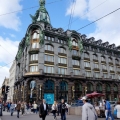 Walk along Nevsky Prospect and through the city’s central neighborhoods
Walk along Nevsky Prospect and through the city’s central neighborhoods
Nevsky Prospect is Saint Petersburg’s main thoroughfare, and is essentially the “city’s face.” The main sights in Saint Petersburg are aligned along this avenue, and the most historically significant neighborhoods and squares lie adjacent to it. Nevsky Prospect forms a direct connection between Alexander Nevsky Monastery and the Admiralty Building – between these two poles you will see stupendous palaces and significant city buildings, cross over rivers and canals on famous bridges, and feel the atmosphere in a modern city inseparably linked to its history over the close to three centuries that the avenue has been in existence. Walking along Nevsky Prospect with a tour guide is one of the best options to begin to get to know Saint Petersburg.
 Peter and Paul Fortress
Peter and Paul Fortress
Originally built for military purposes, but became the country’s main political prison. It is, undoubtedly, the heart and the main symbol of Saint Petersburg.
 Saint Isaac’s Cathedral
Saint Isaac’s Cathedral
This is one of the most important cathedrals in the city, built in the middle of the 19th century and the fourth one that has replaced its predecessors in the same location. It is now a museum, and the platform around the cathedral’s cupola offers one of the best panoramic views of Saint Petersburg.
Near Saint Isaac’s Cathedral, there is a monument to Peter I, the renowned Bronze Horseman, from a poem by Pushkin of the same name. This monument, done by E. Falconet, is arguably the city’s most prominent symbol.
 Yusupov Palace on Moika
Yusupov Palace on Moika
This architectural masterpiece and monument to art is, nowadays, one of the city’s most visited museums where you can see a collection of paintings gathered together from private collections, as well as the superbly preserved interiors in the palace.
The Yusupov Palace on Moika became especially well-known when here, in December 16th, 1916, the imperial family’s “power behind the throne,” Grigori Rasputin, was killed. A special exhibition in the palace talks about these events in detail.
Visiting this exhibition is allowed only when accompanied by a tour guide.
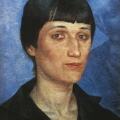 The Russian Museum
The Russian Museum
This museum provides a unique opportunity to learn about Russian painting over the course of the centuries, starting with ancient Russian history (icons by Andrey Rublev and Dionisius) and ending with avant-garde, twentieth-century paintings (Malevich and Kandinsky). The exhibits at the Russian Museum will allow you to get to know Russian painting traditions by tracing its developments through all its key stages and acquiring a holistic picture.
On top of this, the museum building itself is yet another Saint Petersburg architectural showpiece – the Mikhailovsky Palace by Carlo Rossi, built in the Empire style and located on the famous Arts Square. A guided tour given in French to the Russian Museum and the surrounding neighborhood is one of the essential items in our program.
 The Hermitage
The Hermitage
This is the largest and most well-known museum in Saint Petersburg – one that has gathered together one of the most extensive collections of paintings the world has ever seen. The Hermitage’s main building is called the Winter Palace, built in the middle of the 18th century. During a guided tour conducted in English or French you can focus your attention on certain individual artistic epochs or countries (Italian paintings, Dutch paintings, etc.), or ask the guide to organize the visit as a general overview, going through and looking at the Hermitage’s key treasures (it is impossible to see the entire exhibition on display in one visit).
